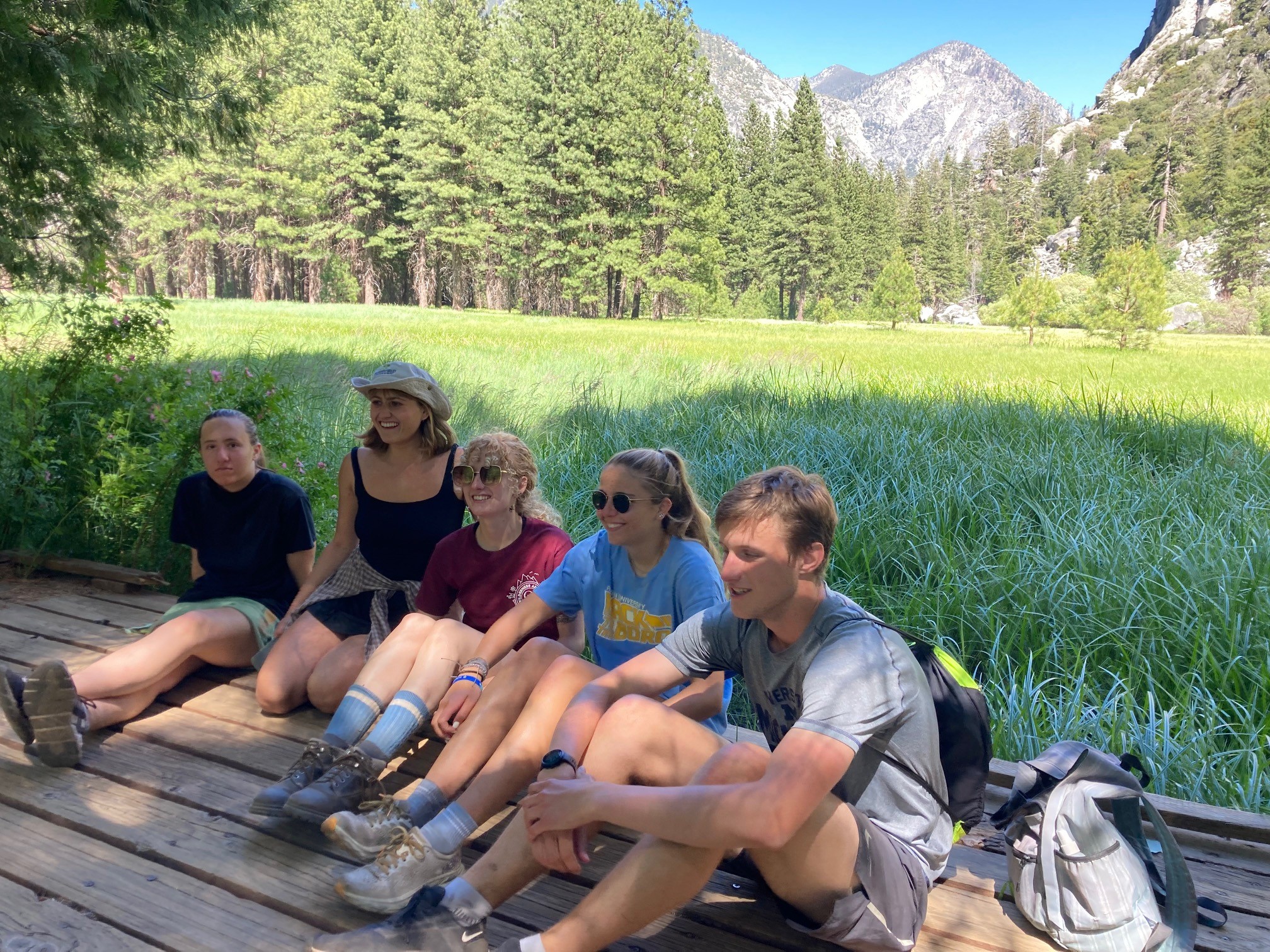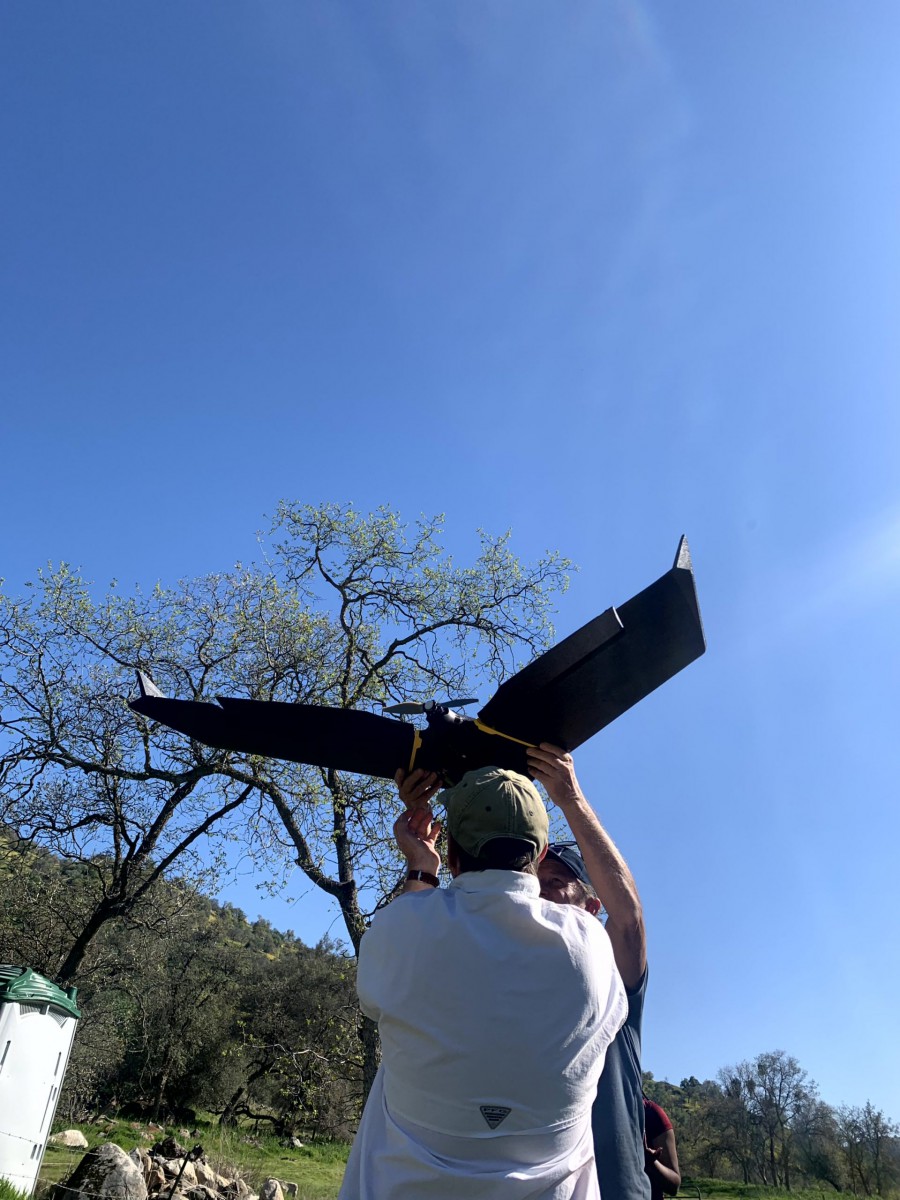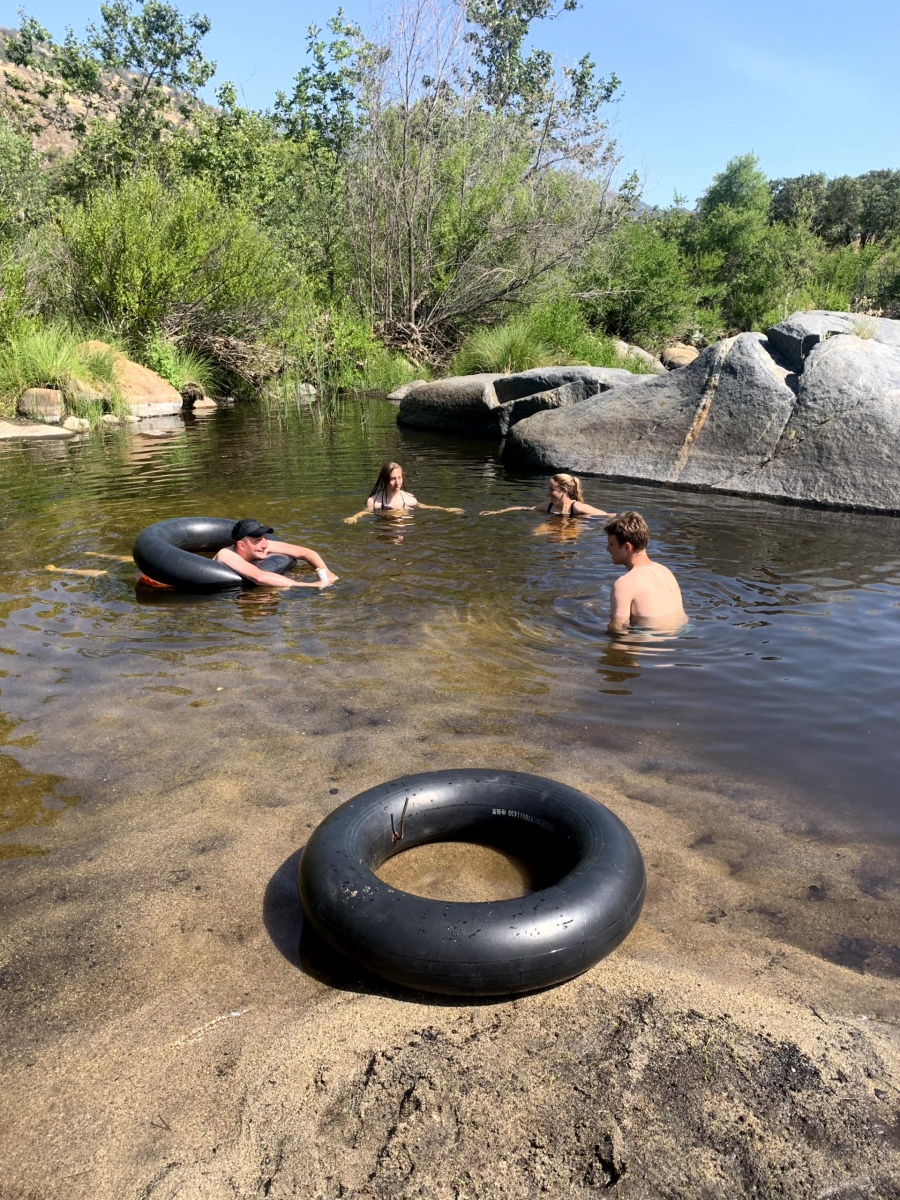Student Experiences
April 21, 2022 - Newspaper article about the Summer REU Program at River Ridge Ranch
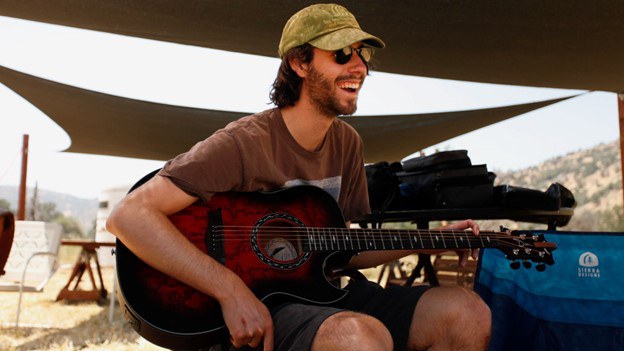
Ben, a Pitzer College environmental science major, spent some time scrolling through the National Science Foundation website before narrowing in on Tracking Land Changes at River Ridge Ranch. Ben was excited by the proposition of field work, a new experience for him. He is no stranger to research, however. In 2022, Ben was part of a team studying paleoceanography, which used algae to date and analyze the geochemical states of the ocean at a given point in time. Ben’s interest in drones was first unlocked during his coursework at Pitzer. He described walking through the San Gabriel Mountains after the abnormal rainfall of 2022-2023, and he felt inspired to look at the effect of high-rainfall winters on the California fire season. In his future career, Ben hopes to play an active part in combating climate change, but he is continuing to ponder what form that could take.

The “Pale Blue Dot,” Carl Sagan’s description for earth based on Voyager 1 space probe’s photo taken 3.7 billion miles away, prompted Cole’s fascination with space. A Marquette University senior studying astronomy and physics, Cole was initially disappointed with his education. “It was just math on a blackboard,” recalls Cole, who was looking for something more physical, real, and measurable. So began his search for a field where he could apply his knowledge. Cole found this first in sports. Playing on the Marquette lacrosse team, he noticed a pattern of wrist injuries that occurred during face-off. He found the pain from these types of injuries was far reaching, affecting 92% of those surveyed. For an entire season, Cole worked with physics faculty members to film face-off and track the rotation of the wrist. He then developed a new technique, which allowed for the possibility of maintaining performance while greatly reducing the potential for damage (Cole presented these findings at a conference in Sacramento soon after the REU concluded). Cole has extensive experience in outdoor education, most notably as a counselor at Camp Courage in Bend, Oregon. Seeing the Tracking Land Change REU opportunity, he felt the call to return to nature. At River Ridge Ranch, Cole used spectrometry to identify tree species along the riparian area. Alongside professor Scott Winslow, Cole trained the computer to read different light signals, in similar fashion to how astronomers categorize stars. The goal was to be able to survey and calculate populations for a single tree species, a method that could revolutionize the speed at which invasive species are exonerated from a region. With his strong interdisciplinary background, Cole looks forward to a career where he can apply his analytical physics-backed brain to one of his many other interests, such as biomechanics or injury prevention for athletes.

After hearing about the REU from her department, Eliza, an environmental science major and Spanish minor from the University of Indiana, felt impassioned to apply. Eliza wanted to improve her technical skills and apply them to her environmental research. With a strong background in the humanities, Eliza looked forward to a new cross-disciplinary experience. Eliza’s REU project uses remote sensing technology to teach computers how to identify tree populations with the intention of dramatically streamlining the identification process in a given region. Since her project was a dramatic departure from her usual studies, Eliza seized upon the opportunity to teach herself a myriad of new subjects. “It’s a public service to ask the most basic questions, like ‘what’s color’ and ‘how does light work’” Eliza says. To obtain data, the team used a spectrometer, a device that takes pictures and gathers the spectral reading of each pixel. In theory, each tree species has a unique color pattern, not visible to the human eye, that could later be cataloged into a library of tree species. Eliza spent her time on River Ridge Ranch mapping tree locations and comparing these locations to the data collected by the spectrometer, as a way to verify the light signatures. Eliza hopes that with these novel mappings she can draw conclusions about the array trees that grow in relation to the water and to each other. Such a theory had first been introduced to Eliza during her earlier work in Peru, where she participated in planting fruit trees and learning how to reforest consciously. Eliza contends that this information could aid in reforestation work, where conservationists could be armed with a greater knowledge of the most successful planting patterns for a man-made forest.

As a conservation biology and ecology major at Arizona State University, Emma credits her academic experience as the main motivator for applying to this REU. She is minoring in sustainability, has a certificate in GIS, and has conducted previous research on a “recovering” ranch. On top of these experiences, she served as a research assistant for a project that assessed animal behaviors dependent on human presence, and as a research assistant for a study on ants that involved cataloging hundreds of ant specimens taken from the Vanuatu archipelago in the South Pacific Ocean. While she can’t predict their future, Emma does have some general hopes. Riparian environments, or the ecosystems alongside rivers, have long been a part of her life, and she expects they will continue to inspire her own personal work and research. Emma has also been thinking about the Salt River, the river of her childhood home in Arizona, and hopes to apply similar research questions and procedures to that area. In terms of education, ASU offers a 4+1 in conservation biology, which has piqued Emma’s interest. Or she will take some time off, work, and return to school for a PhD in environmental science. Emma muses, “There are 7 billion things you can do with a conservation degree.”

During a study abroad in Thailand, Emmy, a photojournalism and sustainability major at the University of North Carolina at Chapel Hill, found herself looking for work opportunities that brought her to a new geographic location. A friend pointed her to REUs, and despite not having the most in-depth background in the sciences, Emmy was sold on the field study aspect of the Tracking Land Changes REU at River Ridge Ranch. Emmy’s primary passion is the beach. Raised in the Outer Banks of North Carolina, she grew up on the water, working as a lifeguard, swimming and surfing in her downtime. Emmy continued to spend time at the beach in college, participating in a 2022 field study taking vegetative surveys. She’s also an active staff member at Endeavors, UNC’s online magazine of research and creative activity. Emmy’s dream future includes travel, a commitment to environmental health, and a career focused on positive change—all while simultaneously enjoying a rich personal life and indulging in her other passions.

CSULB biology student Adam applied for the Tracking Land Change REU after hearing about it from a classmate. Adam has a longstanding interest in ecological field research, having worked on a research project focused on the restoration of native oyster populations in Upper Newport Bay wetlands. Specifically, Adam was tasked with counting microscopic organisms in the soil and comparing populations between restored and unrestored wetlands. Adam is also passionate about building. Growing up as a skater, he built his own ramps and fun boxes. More recently, he has used his building skills as a low-voltage technician. Adam lent his expertise to the REU “squirrel team” by crafting small mammal feeding stations outfitted with protective chicken wire roofs. He hopes to create a causation library of squirrel behaviors, whereby one could predict reactions after observing an initial act. Such work could be continued by future River Ridge Ranch and REU researchers. Adam is also currently crafting a research project with CSULB faculty Mystyn Mills to examine behavioral differences in Catalina Island ground squirrels, which have long been an isolated population, and mainland California ground squirrels. Adam plans to study geography in graduate school, and in the future, he would like to work for a restoration consulting firm.

Middlebury college geography student Pete was on the hunt for a summer job when he discovered REUs. He was sold on the idea of getting paid to be outside and conduct field work. Pete has always been outdoorsy, having worked two summers at an AmeriCorps conservation program in Colorado. During his junior year, Pete participated in a faculty-led trip to Tanzania focusing on field work in environmental restoration. Then, after hiking the John Muir Trail in the Sierra Nevada mountain range, he fell in love with the California landscape. The Tracking Land Change program at River Ridge Ranch felt like a natural next step. Upon his return to Middlebury, Pete plans to complete his senior thesis on fire. He finds the field work enjoyable, and the topic continues to drive his curiosity. “I don’t think there’s any other opportunity where I’d be able to go out and set fires and do research,” says Pete. He also wants to enroll in an advanced cartography course, with a culminating project that maps some type of geographic data. Pete would like to illustrate the changing fire regime in California, showing how the fire season has been continuously shifting to later in the year. Post graduation, Pete is considering traveling to Alaska to conduct remote fire sensing, and in the long term he hopes to have an outdoor-oriented career, one that is fun and driven by his passions for research and experimentation.
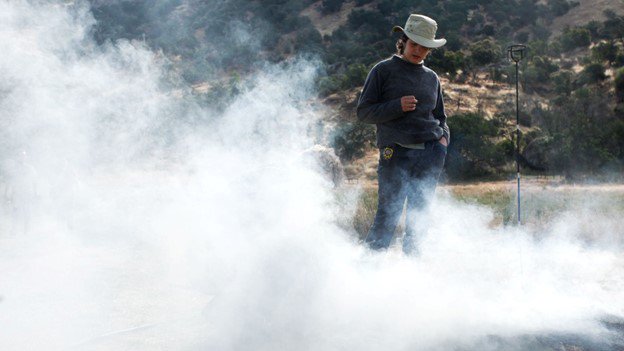
Lola, an environment major and urban studies minor student at McGill University, searched keywords “geography” and “fieldwork” when looking for summer work on the West Coast. She landed on the project Tracking Land Changes at River Ridge Ranch, her first exposure to REUs. Yet her introduction to fieldwork began earlier, as a research assistant for a prospective grad student, who was looking at trait heterogeneity in tropical roots. Living in Costa Rica, Lola studied the roots of trees and the ecosystem at large, and by the end of her month’s stay, she experienced a deep connection to the region. After returning to school, Lola felt the tug of nature once again, prompting her application to the TLC REU. Lola has adopted a holistic approach to life, acquiring new skills with each project, and knowing these experiences will somehow shape her future. Whether or not her career path will fit directly under the umbrella of “research” remains unknown. Whatever she does, Lola hopes to find her own “little corner of the world,” tackling problems of climate change and practicing sustainable land management.

Sasha bridges environmental science and GIS in her accelerated B.A./Master’s Program in geography at Clark University. No stranger to field work, in the summer of 2022, she partook in an REU focusing on spatial modeling of electoral districting with the University of Washington, Tacoma and the University of Puget Sound. This research streamlined a measurement of gerrymandering as well examined the general community districting affects on the livelihoods of citizens. Earlier, in her junior year, Sasha traveled to Bhutan to participate in a project with the School of Field Studies, Bhutan Ecological Society, and Ugyen Wangchuck Institute for Conservation and Environment. Her coursework oriented around Himalayan development and mountain ecology, based on Bhutan’s strict isolation up until 1974; she also helped track the tiger population throughout the Himalayas. Sasha finds the most fulfillment at the intersection of conservation biology and GIS, and in a broader sense, through field work, which is what made the Tracking Land Change program a perfect fit. Despite her previous REU experience, Sasha acknowledged that River Ridge Ranch is quite special. “[We get to] live here, doing field work instead of in a lab at a university,” she explains. Sasha hopes to follow Professor Mystyn Mill’s continued work with squirrels at River Ridge Ranch, but says she’ll be content in any position that helps her evade a deskbound, computer-oriented career.







Here is a highlight reel of the River Ridge Ranch experience!

